Ski: 2022-2023 Armada ARW 106 UL, 180 cm
Test Location: Mount Crested Butte, Colorado
Days Skied: 13
Available Lengths: 164, 172, 180, 188 cm
Blister’s Measured Tip-to-Tail Length (straight-tape pull): 177.1 cm
Stated Weight Per Ski: 1875 grams
Blister’s Measured Weight per Ski: 1836 & 1838 grams
Stated Dimensions: 134-106-124 mm
Blister’s Measured Dimensions: 134.9-105.4-124.3 mm
Stated Sidecut Radius (180 cm): 20.5 meters
Measured Tip & Tail Splay (ski decambered): 69 mm / 59 mm
Measured Traditional Camber Underfoot: 5 mm
Core Materials: Caruba + Titanal Binding Reinforcement + Fiberglass Laminate
Base: sintered “S7”
Factory Recommended Mount Point:
- “Factory Recommended” line: -5.05 cm from center; 83.5 cm from tail
- “Freestyle Recommended” line: -1.55 cm from center; 87 cm from tail
Boots / Bindings / Wax: Tecnica Cochise Pro W; Atomic Hawx Ultra 130; Tecnica Mach1 MV 130 / Tyrolia Attack 13 / mountainFLOW All-Temp & Warm Hot Wax

Intro
The ARW series is Armada’s women’s all-mountain-freestyle collection, mirroring the men’s ARV series, but with slightly different constructions. That said, Armada makes the ARW 106 UL in lengths ranging all the way from 164 cm to 188 cm, so it’s meant for people of all nearly all sizes who want a versatile, playful, and lightweight all-mountain ski.
We’ve been testing the 180 cm ARW 106 UL, a length that let us have multiple reviewers with very different skiing styles all try it out and provide their thoughts. So here, Dylan Wood, Luke Koppa, and I will all be chiming in on what we think of this ski and what sorts of skiers will get along best with it.
What Armada says about the ARW 106 UL
“The ARW 106 UL is the evolution of the long-sought one-ski quiver for the shredder who does a little bit of everything. An ultralight Caruba Core lowers the swing-weight and keeps things light when boosting airs or hitting the bootpack to get that secret stash. The Smear Tech base’s edgeless beveled tips and tails help the ski effortlessly float in powder and charge through crud without deflecting while enabling a surfy feel and catch-free butters. With sizes going up to 180 and 188, we expect plenty of your guy friends looking for versatile performance with a unique, ultralight construction to pick these up as well. Chase powder, lap the park, carve up groomers and slay the bumps. The ARW 106 UL is ready for anything.”
Construction
As noted in Armada’s copy about this ski, the ARW 106 UL features their lightweight Caruba wood core, as well as a fiberglass laminate and a bit of metal around the binding area for screw retention. It also features Armada’s “Smear Tech,” which basically means that the area around the edges at the ends of the rockered tips and tails is convex, with the goal of adding a more maneuverable, surfy feel in soft snow and making for easier butters. In concept, this is very similar to Atomic’s HRZN Tech.
Shape / Rocker Profile
For a ~105mm-wide freestyle-oriented ski, the ARW 106 UL has a pretty middle-of-the-road shape and rocker profile. It’s got a bit of early taper at the tips and tails (though not a wild amount) and it has deeper rocker lines than many directional skis around the same width, but not the deepest rocker lines in its class. And as you’d expect from a ski in this class, it’s got a pretty full twin tip.
Flex Pattern
Here’s how we’d characterize the flex pattern of the ARW 106 UL:
Tips: 6.5
Shovels: 6.5-7
In Front of Toe Piece: 7.5-9.5
Underfoot: 10
Behind the Heel Piece: 9.5-8
Tails: 7.5-6.5
Mount Point
The ARW 106 UL has two recommended mount points: the “Freestyle Recommended” at about -1.5 cm from true center, and the “Factory Recommended” line at about -5 cm from true center. Both are pretty close to center when compared to the whole market, with the Freestyle line being nearly dead-center and ideal for those coming from center-mounted skis, while the Factory line will work better for those who still like to ski with a fairly forward stance (more on that below).
Weight
As implied by the “UL” in its name, the ARW 106 UL is pretty light for its size. It’s not as light as most dedicated touring skis, but it’s almost 300 grams lighter per ski than the ARV 106 in the same length.
For reference, here are our measured weights for some notable skis. Keep in mind the length differences to try to keep things apples to apples.
1800 & 1804 Head Kore 105, 184 cm (21/22)
1806 & 1862 Armada Tracer 108, 180 cm (19/20–21/22)
1820 & 1821 Majesty Havoc Carbon, 186 cm (20/21–22/23)
1836 & 1838 Armada ARW 106 UL, 180 cm (21/22-22/23)
1848 & 1903 Line Sick Day 104, 186 cm (16/17–21/22)
1875 & 1881 Line Sir Francis Bacon, 184 cm (19/20–22/23)
1905 & 1919 J Skis Slacker, 188 cm (20/21–21/22)
1920 & 2006 RMU North Shore YLE 110, 186 cm (21/22–22/23)
1947 & 2011 4FRNT Devastator, 186 cm (20/21–22/23)
1951 & 1953 Elan Ripstick 106, 188 cm (20/21–22/23)
1951 & 1957 RMU Apostle 3.0 106 Wood, 184 cm (21/22–22/23)
1964 & 1972 Moment Deathwish, 184 cm (19/20–20/21)
1970 & 1993 Moment Deathwish 104, 184 cm (21/22–22/23)
1993 & 2026 Black Crows Atris, 184.2 cm (19/20–21/22)
1999 & 2020 Rossignol BLACKOPS Sender Ti, 180 cm (20/21–22/23)
2005 & 2035 Liberty Origin 106, 187 cm (19/20–20/21)
2008 & 2065 Wagner Summit 106, 186 cm (20/21–22/23)
2010 & 2023 Moment Commander 98, 182 cm (20/21–22/23)
2011 & 2028 Moment Wildcat 108, 184 cm (19/20–20/21)
2011 & 2046 Elan Ripstick 106 Black Edition, 188 cm (21/22–22/23)
2022 & 2046 DPS Foundation Koala 103, 184 cm (21/22–22/23)
2046 & 2120 Black Crows Corvus, 188 cm (18/19–22/23)
2073 & 2074 Season Nexus, 183 cm (20/21–22/23)
2074 & 2088 Line Blade Optic 104, 178 cm (22/23)
2096 & 2100 Salomon QST 106, 181 cm (19/20–21/22)
2110 & 2119 Moment Wildcat 108, 190 cm (19/20–20/21)
2112 & 2125 4FRNT MSP 107, 187 cm (18/19–22/23)
2068 & 2178 Salomon QST 106, 181 cm (22/23)
2116 & 2181 Faction Dictator 3.0, 188 cm (19/20–21/22)
2120 & 2134 Blizzard Rustler 10, 188 cm (19/20–22/23)
2145 & 2167 Sego Big Horn 106, 187 cm (20/21–21/22)
2153 & 2184 Rossignol BLACKOPS Sender Ti, 187 cm (20/21–22/23)
2165 & 2211 K2 Mindbender 108Ti, 186 cm (19/20–21/22)
2165 & 2219 Icelantic Nomad 105, 191 cm (19/20–20/21)
2170 & 2180 Dynastar M-Free 108, 182 cm (20/21–22/23)
2177 & 2178 Moment Commander 108, 182 cm (20/21–22/23)
2232 & 2242 Blizzard Cochise 106, 185 cm (20/21–22/23)
2230 & 2290 Line Blade Optic 104, 185 cm (22/23)
2295 & 2344 J Skis Hotshot, 183 cm (20/21–21/22)
2302 & 2342 Dynastar M-Free 108, 192 cm (20/21–22/23)
2312 & 2386 Prior Husume, 188 cm (17/18–22/23)
2321 & 2335 Fischer Ranger 107 Ti, 189 cm (19/20–20/21)
2353 & 2360 Volkl Katana 108, 184 cm (20/21–22/23)
2449 & 2493 J Skis Hotshot, 189 cm (20/21–21/22)
Now, onto how the ARW 106 UL performs on snow:
FULL REVIEW
Groomers
Kara Williard (5’9”, 167 lbs / 175 cm, 75.7 kg): The ARW 106 UL isn’t the most remarkable carving ski on icy groomers, which is to be expected, given its rocker profile, width, and weight. However, it actually was a lot more fun on groomers than I was expecting. The midsection of the ARW 106 UL feels quite supportive and stiff. This ski also feels lively and snappy, and it initiates carved turns well. The ARW 106 is a super fun ski to make quick, semi-carved turns on (releasing the tail just before the finish of a turn), yet you can also take a more playful approach, slarving in and out of turns. When the groomers are grippy, the ARW carves fairly well, and I was impressed by how hard I could lay into the ski while still trusting it on edge.
The ARW 106 UL has a smooth-feeling flex pattern, and this is especially apparent on grippy / trustworthy groomers. I didn’t find myself over-flexing the ski, even though the shovel and tail are pretty soft. Overall, there are so many skis I trust more at higher speeds and more aggressive edge angles than the ARW 106 UL, but this makes sense given the ARW 106’s class, and in no way did it totally compromise my ability to have fun on groomers.
Luke Koppa (5’8”, 155 lbs / 173 cm, 70 kg): I agree with everything Kara said. As a ~106mm-wide, fairly light, twin-tipped ski, the ARW 106 UL obviously isn’t the best ski out there for ripping groomers, but it does quite well for what it is. The firmer the snow, the more I’m inclined to switch out for something narrower, heavier, and stiffer. But on fairly “regular” mid-winter Colorado groomers (i.e., not icy, nor super soft), the ARW 106 is totally capable of arcing fairly high-edge-angle turns, and it gets more fun the softer the snow gets. Carving the ARW 106 made me think of the Line Sir Francis Bacon, which is one of my favorite carvers in the wider all-mountain-freestyle category. The ARW 106 isn’t quite as snappy and easy to bend into tight turns, but it still initiates turns quite easily for a more center-mounted ski, and the edge hold through the midsection of the ski is pretty good for a ski in its class.
Dylan Wood (5’10”, 155 lbs / 178 cm, 70 kg): Kara and Luke hit all the highlights. So long as the groomer you are skiing is somewhat soft, the ARW 106 UL is a great carver for a wider all-mountain freestyle ski. It feels most comfortable making both shorter and longer GS turns, and never exhibited any sort of unpredictability on groomers. While I wouldn’t trust it on ice, it did have good edge hold for a ~106mm-wide all-mountain freestyle ski, especially when considering that the widest parts of this ski’s tips and tails don’t even have edges…
Soft Chop
Kara: My first days on the ARW 106 UL included a few inches of new snowfall with a supportive and sometimes icy base underneath. I was impressed by how easy it was to make quick turns on this ski, and I felt a lot of energy and rebound through the midsection of the ski. While the shovels sometimes feel a bit soft and like they deflect a bit when striking firm patches of snow, overall, the ski feels predictable. The ARW 106 UL feels best when taking a playful and very turn-focused approach to skiing the chop. For more of a charging approach with fewer turns and higher speeds, I prefer something more stable and planted (likely heavier, too).
Luke: I’ve skied a bit of soft, cut-up snow on the ARW 106 and enjoyed it for what it is — a pretty light, playful ski. That means it’s certainly not what I’d pick for making big, fast, powerful turns through choppy conditions, but also that it’s really fun when I’m looking to make more turns, slash piles of soft snow, and find airs and transitions. And for this sort of ski, which doesn’t offer a whole lot of inherent stability, I mostly want predictably; the ARW 106 checks that box. After just a few runs, I had a pretty good idea of how hard I could push this ski, rather than it randomly folding up or getting super out of control with no forewarning. Even in the “more playful” category of skis around this width, there are more stable options, but for how quick, lively, and maneuverable the ARW 106 UL is, it offers a respectable level of stability in chop.
Dylan: Yep, the ARW 106 UL is no bulldozer in soft chop, but it is predictable and gets along really well with the dynamic and playful style that Luke described above. Despite having the word “Ultralight” implied in the name of this ski, it really isn’t radically lightweight and I was surprised by how stable it felt in chop. Let me be clear, though: folks looking for composure and good suspension out of their all-mountain freestyle ski do have stiffer and heavier options that would be more practical.
Firm Chop / Crud
Kara: The ARW 106 UL isn’t typically the type of ski I gravitate toward for skiing firm crud, since it isn’t very damp or planted. But the ARW 106 UL feels reasonable in most firm conditions because it has a smooth flex pattern and is quite maneuverable, which allows me to ski in a very conservative way, making quick, tight turns. I feel supported by the stiffer midsection of the ARW 106 UL, while also being comfortable opening things up a bit when I want, knowing that I can easily shut down speed when needed. In this way, the ARW 106 is a forgiving and intuitive ski that isn’t punishing whatsoever.
For someone who makes more turns and/or prefers a maneuverable and forgiving ski in the firm crud, as opposed to a damp ski that can charge through with maximum stability, the ARW 106 is a reasonable choice. For reference, I find the Line Blade Optic 104 comparably playful, but quite a bit more stable and damp.
Luke: Kara did a great job summing this up. The ARW 106 doesn’t have the weight or stiff flex pattern to really bash through firmer chop and crud, but it does make it very easy to ski these conditions with a mellower, more laid-back style. Making lots of turns (even without perfect technique) is easy on this ski, and while I still personally prefer something with better suspension / damping when things are super firm (think early-morning spring refrozen crap), the ARW 106 does an admirable job of muting out the harsh feel of that sort of snow, given how little it weighs.
Dylan: I really don’t have much to add here. Unsurprisingly, this lightweight, 106mm-wide all-mountain freestyle ski does not handle firm crud very well and rewards a more cautious approach. Again, it doesn’t feel as harsh as its “Ultralight” moniker or even measured weight might imply, but this ski does not inspire me to charge hard when the snow is ultra-firm.
Moguls, Trees, & Tight Terrain
Kara: The ARW 106 UL stood out in tight terrain and big moguls because it lets me ski that sort of terrain with a more playful approach without being overly demanding. The low swing weight and easy turn initiation of the ARW 106 UL make for intuitive maneuverability. From a centered stance, the ARW 106 feels easy and doesn’t require lots of forward pressure on the shovels to initiate a turn, which makes it more forgiving and less committing in tight terrain than many of the more directional, stiffer, less rockered alternatives.
At higher speeds and in firm moguls, the ARW 106 UL isn’t as stable or supportive as several narrower, stiffer skis that I prefer for those conditions (e.g., Blizzard Sheeva 10 and Nordica Unleashed 98 W). I felt best on the ARW 106 UL when controlling my speed and making slower and more deliberate turns. All that said, it was nice to hop on a ski that didn’t require a ton of effort or an aggressive forward stance in really tight terrain. Overall, I found the ARW 106 UL the most confidence-inspiring and enjoyable in tighter terrain.
Luke: I got along really well with the ARW 106 in tight spots because it’s just very easy to ski. I think it has a really big sweet spot, and while those coming from very directional, strong skis may find it lacking in support through the shovels, those who aren’t driving the shovels of their skis super hard will likely find this ski to be very intuitive. I could drive its shovels a bit, ski very centered, or even get a bit backseat and still feel in control through all those stances. As someone who likes to ski bumps and trees with a dynamic style — making lots of turns and always looking for a little air — the ARW 106 worked really well for me. It’s got a low swing weight, is lively, and is easy to release / throw sideways — all things that add up to a very maneuverable ski.
There are loads of better options if you want something really planted, supportive, and powerful, but for both directional and freestyle-oriented skiers who want something quick, loose, and playful in moguls and trees, the ARW 106 offers a lot to like.
Dylan: Luke and Kara made a lot of great points that I agree with. The ARW 106 UL is quick, loose, forgiving, and easy in tight off-piste terrain. It definitely worked best with a more centered stance but didn’t fold up so long as I wasn’t driving the shovels very aggressively. If you are looking for something easygoing, maneuverable, and forgiving in bumps, trees, and tight terrain, you should certainly not dismiss the ARW 106 UL just because it is a very freestyle-friendly ski.
Powder
Kara: Most of the powder days I encountered on the ARW 106 UL were not bottomless, so I’d refer mostly to the “Soft Chop” section above as to how the ARW 106 UL performs on softer days. This is unfortunate, because, based on the fairly shallow pow days I experienced on the ARW 106 UL, it floats really well and I would love to test in some really deep snow. However, through heavy spring chop and new snow (less than 8”), I found the ARW 106 UL to float pretty effortlessly, and I didn’t really have to work the ski or change my balance point / stance to stay atop the snow. It provided a surfy, loose ride through powder. This is the first ski I’ve skied with a convex shape in the tip and tail, or what Armada calls “Smear Tech.” I can’t speak to how this translates to butters or any of the like, but I will say the ARW 106 UL offered a really smeary and easy transition between turns, even in deeper or heavier snow.
Luke: I didn’t get the ARW 106 in a ton of deep snow, but I agree with Kara. The one thing I’d add is that, as a more center-mounted ski, the ARW 106 required a more centered, upright stance in deep snow than many of the more rearward-mounted (and typically longer) skis I spend time on around the same width. But in terms of maneuverability and how loose the tips and tails of the ARW 106 feel in deep snow, I’m a big fan — it’s not a night-and-day difference vs. similar skis without convex tips and tails, but it is noticeable.
Dylan: I did not have the pleasure of skiing the ARW 106 in powder, so I’d refer to what these two said above.
Playfulness
Kara: The ARW 106 UL is one of the most playful skis I spent time on this winter, yet it provided enough stability and versatility for me to ski it confidently in most terrain on the mountain. It certainly feels best when skiing with a fairly centered stance. I imagine that a very playful skier, who is capable of more tricks and spins than myself, could take the playfulness of the ARW 106 UL to another level, while also benefiting from its versatility elsewhere. But I will let Dylan speak more about that.
Luke: The ARW 106 UL is playful in pretty much every regard. It’s got a low swing weight, its tips and tails feel loose, it feels balanced in the air, it skis switch well, it’s easy to bend, and it’s pretty lively. As someone who typically prefers skis around this width in the ~184–192 cm range, the 180 cm ARW 106 UL was one of the most playful skis I spent time on this year, and I definitely never felt like it was too sluggish, too stiff, too locked-in, etc.
Dylan: These two are very right. Like Luke, I am usually on longer skis, and I would probably prefer the 188 cm length of the ARW 106 UL as an all-mountain ski. However, in the park and all over the mountain, the 180 cm ARW 106 felt playful in just about all the ways that it could. It is very easy to flip and spin, with a very balanced feel and low swing weight. This ski does great at taking off, landing, and just cruising switch, and I’d imagine it would do well at this in deeper snow (potentially up to a foot / 30 cm of powder), too.
This ski initiates butters well and predictably, and I think this is due to both its flex pattern and edgeless beveled base on the tips and tails. It is also pretty lively and energetic through the midsection, which was nice for not only popping in and out of butters, but also for just popping onto features or getting some extra air for a jump.
Its low swing weight and wider platform make this ski great for rails, and it is very forgiving of shuffling out of botched tricks. On our medium-sized (around 30 feet / 9 meter) jumps on Mt. CB, the ARW felt plenty stable and like it could handle much bigger airs. Its softer shovels and tails aren’t the most supportive on majorly frontseat / backseat landings, but so long as I was landing mostly over my bindings, I didn’t wash out on this ski.
Mount Point
Kara: I skied the ARW 106 UL at the “Factory Recommended” mount point, which is -5 cm from true center. This is certainly a step away (or rather, forward) from the majority of directional skis that I ski, which required me to make an adjustment from my preferred forward stance. But the ARW 106 UL was an intuitive ski from this centered position, so this was a reasonable adjustment to make in order to benefit from the playful and energetic sweet spot of this ski.
Luke: I skied the ARW 106 on the same line and loved it there, with no desire to move forward or back. If you spend a lot of time in the park on your ~106mm-wide skis, I could certainly see the benefit of moving forward of the line and toward the “Freestyle Recommended” line. And if you’re a directional skier looking for something really easy and maneuverable, you could probably move a cm or two behind the Factory line. But as someone who likes to be able to drive the shovels of a ski a bit but also likes the option of skiing centered, the recommended line on the ARW 106 worked great for me.
Dylan: There’s a good 3.5 cm between the “Factory Recommended” and “Freestyle Recommended” lines. Given that we mounted on the former, our demo bindings didn’t quite have the room to go all the way to that -1.5 cm Freestyle line. I did manage to get the bindings about 3 cm forward of the factory line, or ~2 cm from true center. There, the ARW 106 continued to feel intuitive, and felt like an even better tool for skiing park and taking a more freestyle-focused approach to the mountain (like, making the mountain your playground or something…). If you’re wondering where to mount the ARW 106 UL, I’d defer to what Luke said above, but my 2 cents is that I skied the ARW 106 UL mounted in a few places on and forward of the Factory line, and they all made sense for different applications; the ski never felt weird in any spot.
Length
Kara: For a ski as loose and maneuverable as the ARW 106 UL, skiing the 180 cm length worked great for me. The contact length and effective edge of this ski are fairly short, considering its rocker profile and taper at the tips and tails. I personally wouldn’t choose longer for my skiing style or the tight terrain of Mt. Crested Butte, since I found the 180 cm to be a blast in our moguls and tight terrain. I imagine that many skiers could opt for the longer length and not feel burdened by it, while gaining a bit more stability, considering that the ARW 106 UL skis on the shorter side.
Luke: I had a great time on the 180 cm ARW 106 and really enjoyed how nimble, maneuverable, and generally playful it felt. If I were putting it in my quiver as a more playful alternative to heavier, more stable skis, I’d probably stick with the 180 cm length. If I wanted a more versatile, more stable ski, I’d probably bump up to 188 cm, though I highly doubt that going up in length is going to turn this ski into some drastically more stable, damp charger. So while I wouldn’t hesitate about sizing up if you’re between sizes, I do not think sizing up from your normal size will turn this ski into something totally different.
Dylan: These two summed it up well. Think about your intended use for this ski, and size accordingly. Just know that it will always be a playful, nimble, freestyle-oriented ski, regardless of what length you pick. For what it’s worth, I’d be content on the 180 cm length if this were my wide park ski, and I’d probably prefer the 188 cm length if this was more of an all-mountain, one-ski-quiver for me.
Who’s It For?
Kara: The ARW 106 UL is a versatile ski situated on the playful end of the spectrum. For someone who prioritizes maneuverability over stability and is looking for a ski that is quite playful, the ARW 106 UL is a solid choice. While you by no means have to be a freestyle skier to benefit from the several likable and intuitive qualities of the ARW 106 UL, it’s not a great option for a directional skier who tends to gravitate toward damp and hard-charging skis. However, for someone who wants a forgiving, playful, and well-rounded ski that handles a variety of conditions and terrain pretty well, the ARW 106 UL is an excellent choice.
Luke: The ARW 106 is one of the generally more playful skis in its width class, yet it still feels pretty intuitive if you ski with a fairly directional style. So I think it’s a great choice for freestyle-oriented folks who want something really quick, loose, and surfy, but it could also be a good option for directional skiers who don’t really want a stiff, precise ski that demands great technique all the time. It’s definitely not for people who want something that’s very damp or stable, nor for those who always ski with an aggressive, forward, driving stance. But once you get used to it, the ARW 106 provides a really easy ride in challenging terrain while handling higher speeds a bit better than you’d expect.
Dylan: I agree with Kara and Luke; they did a good job of outlining a few groups of skiers that ought to be looking at the ARW 106 UL, so I won’t just repeat what they said. I do want to mention that I think beginner and intermediate skiers looking for something moderately wide, lightweight, forgiving, and playful should take a long look at this ski, especially if you are or want to be spending a lot of time skiing bumps, trees, and tight terrain.
Bottom Line
Kara: My experience on the ARW 106 UL was a great reminder that lighter, more playful skis can be great tools for feeling more comfortable in scary terrain. While it’s not a ski that is my top choice for the often firmer conditions I find myself on, it’s a wonderful option for the days when I want to push my skiing comfort level without worrying about a ski punishing sloppy technique, or the conditions are on the softer and more trustworthy end. The only thing I am missing is a really deep day on the ARW 106 UL, and the prospect of this has me excited to jump back on it next season. Well, that, and the ability to do the sweet tricks that Dylan speaks about.
Luke: The ARW 106 UL reminds me of some of my favorite ultra-playful skis, namely, the Line Sir Francis Bacon and K2 Reckoner 102, but the ARW 106 bumps up the versatility a bit, at the cost of just a tiny bit of overall playfulness. It’s really easy — and fun — to ski, but it lets me push things just a bit harder than some of the most playful skis in the category. It’s still a ski that’s best suited to those who like to make more turns and seek out things to jump off throughout the mountain, rather than those who want to go fast and minimize their turns, but the ARW 106 UL is a playful ski that could be a lot of fun for skiers from a pretty wide range of backgrounds.
Dylan: The ARW 106 UL is a very playful ski that could work for a lot of skiers, whether you are doing “sweet tricks” or not. And despite the “W” in its name and positioning within Armada’s line of women’s all-mountain freestyle skis, it can most certainly be enjoyed by all genders.
Deep Dive Comparisons
Become a Blister Member or Deep Dive subscriber to check out our Deep Dive comparisons of the ARW 106 UL to see how it compares to the Line Sir Francis Bacon, Salomon QST 106, RMU Apostle 3.0 106, K2 Reckoner 102, Line Blade Optic 104, 4FRNT Devastator, Season Nexus, DPS Koala 103, Dynastar M-Free 108, Volkl Revolt 104, Sego Big Horn 106, Moment Deathwish 104, and Black Crows Atris.

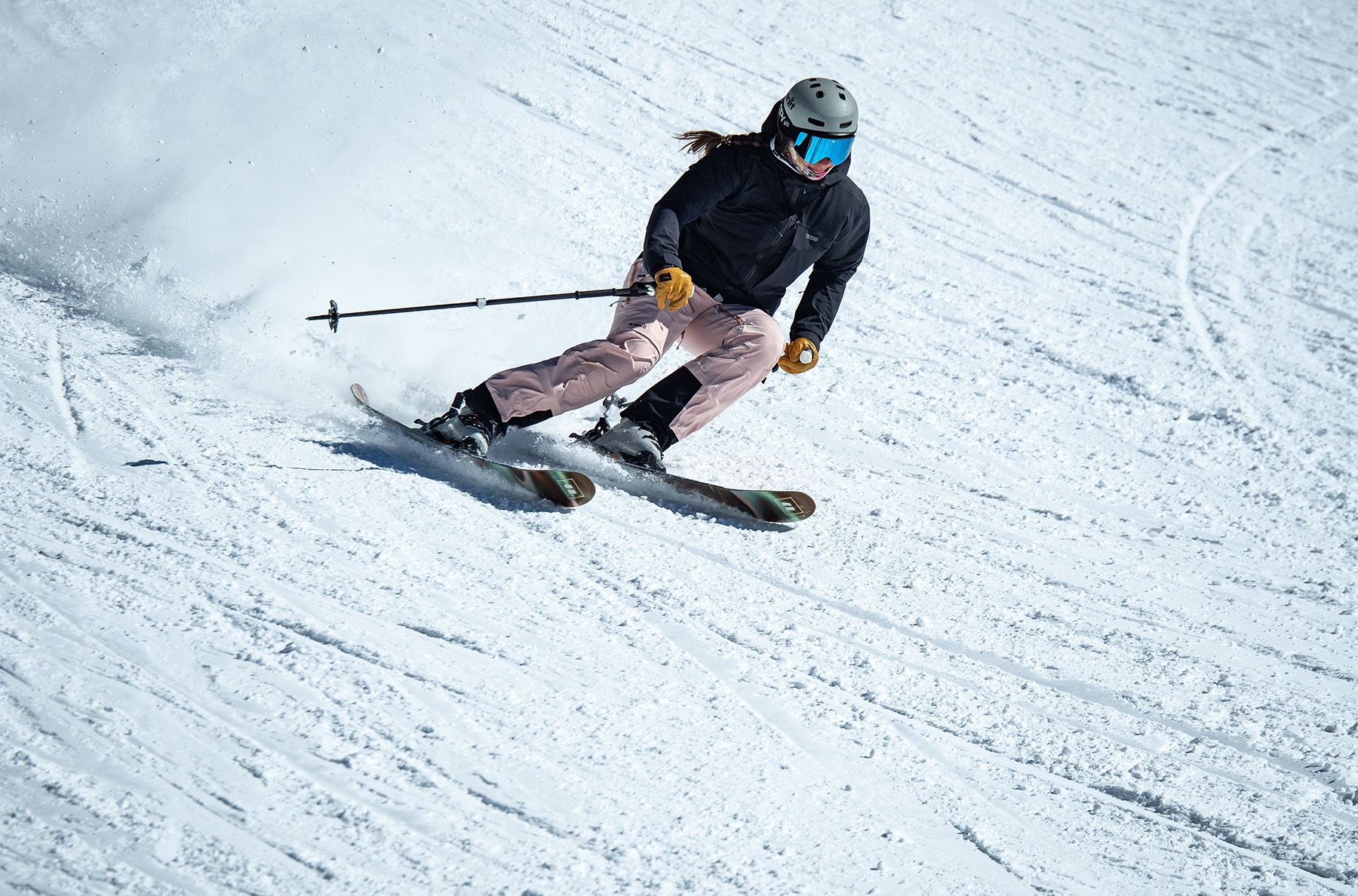
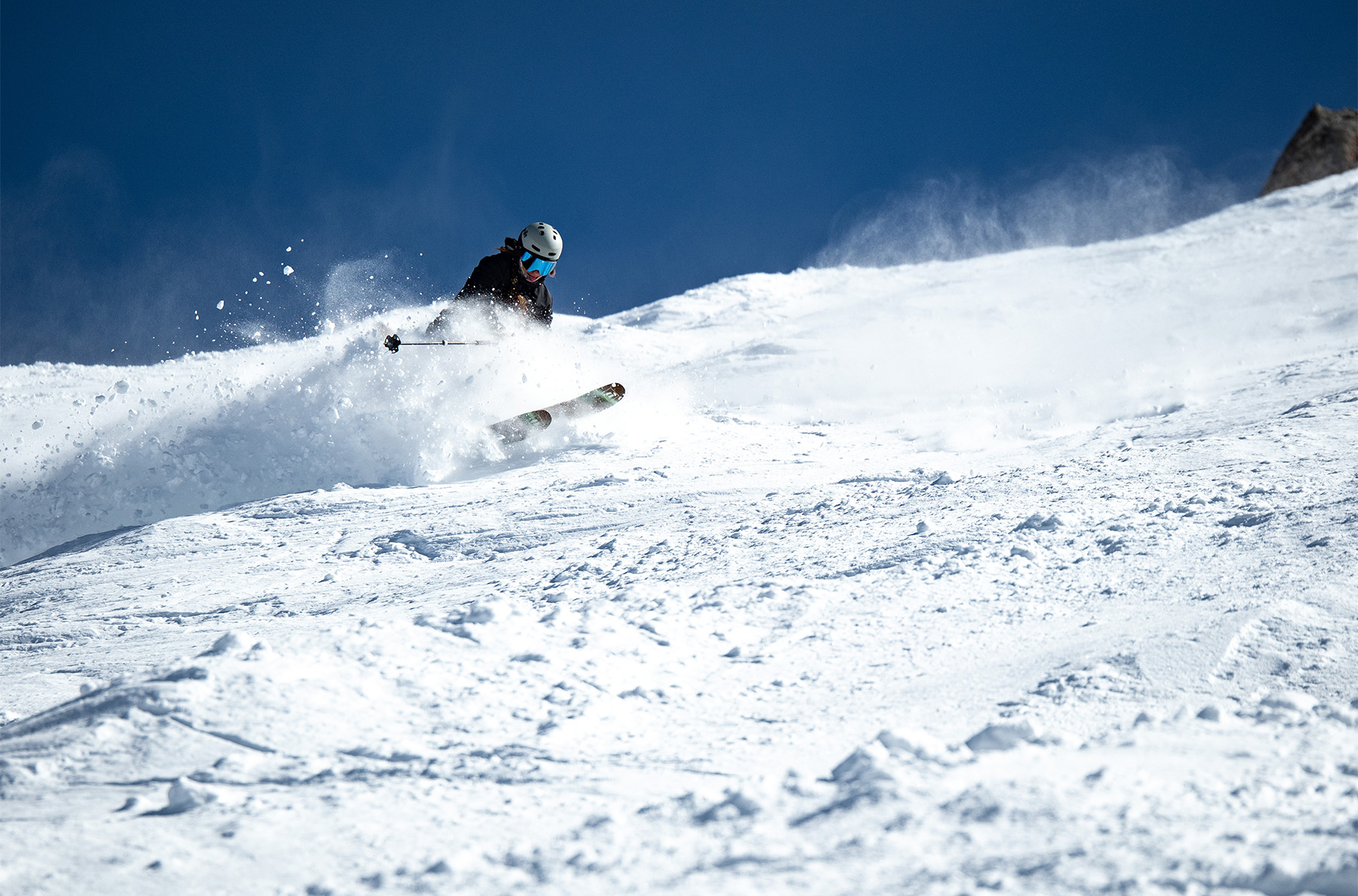
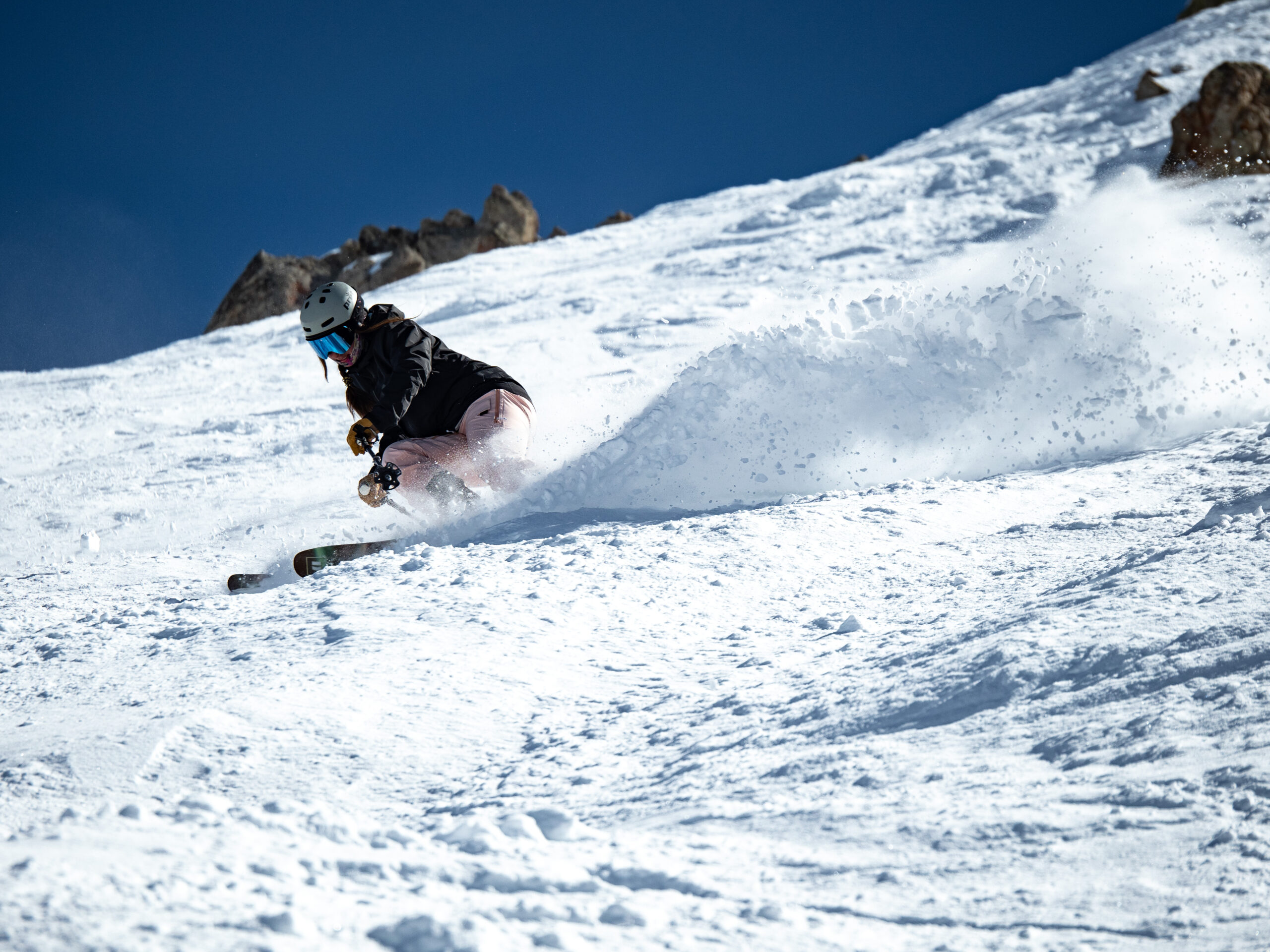
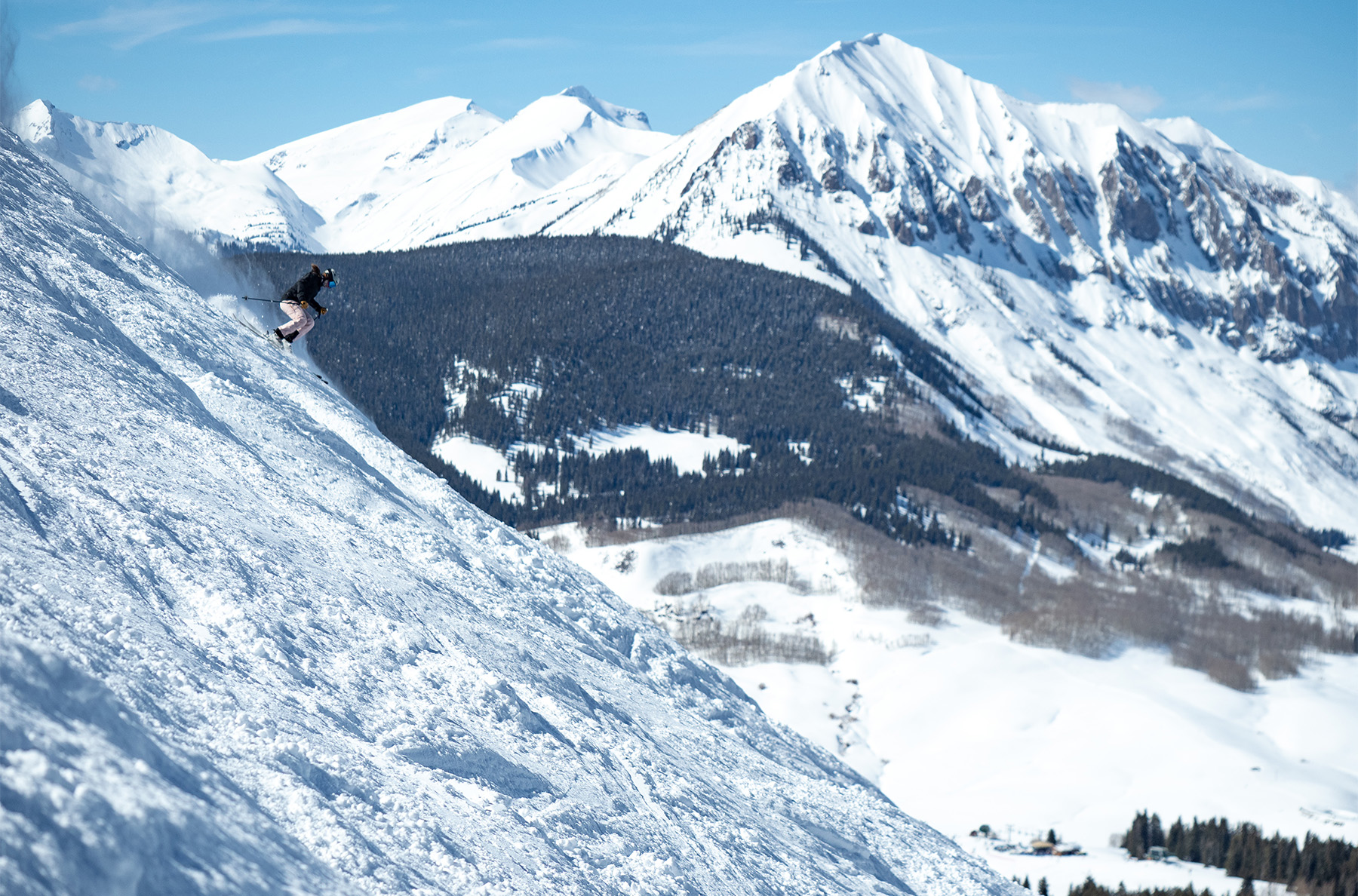
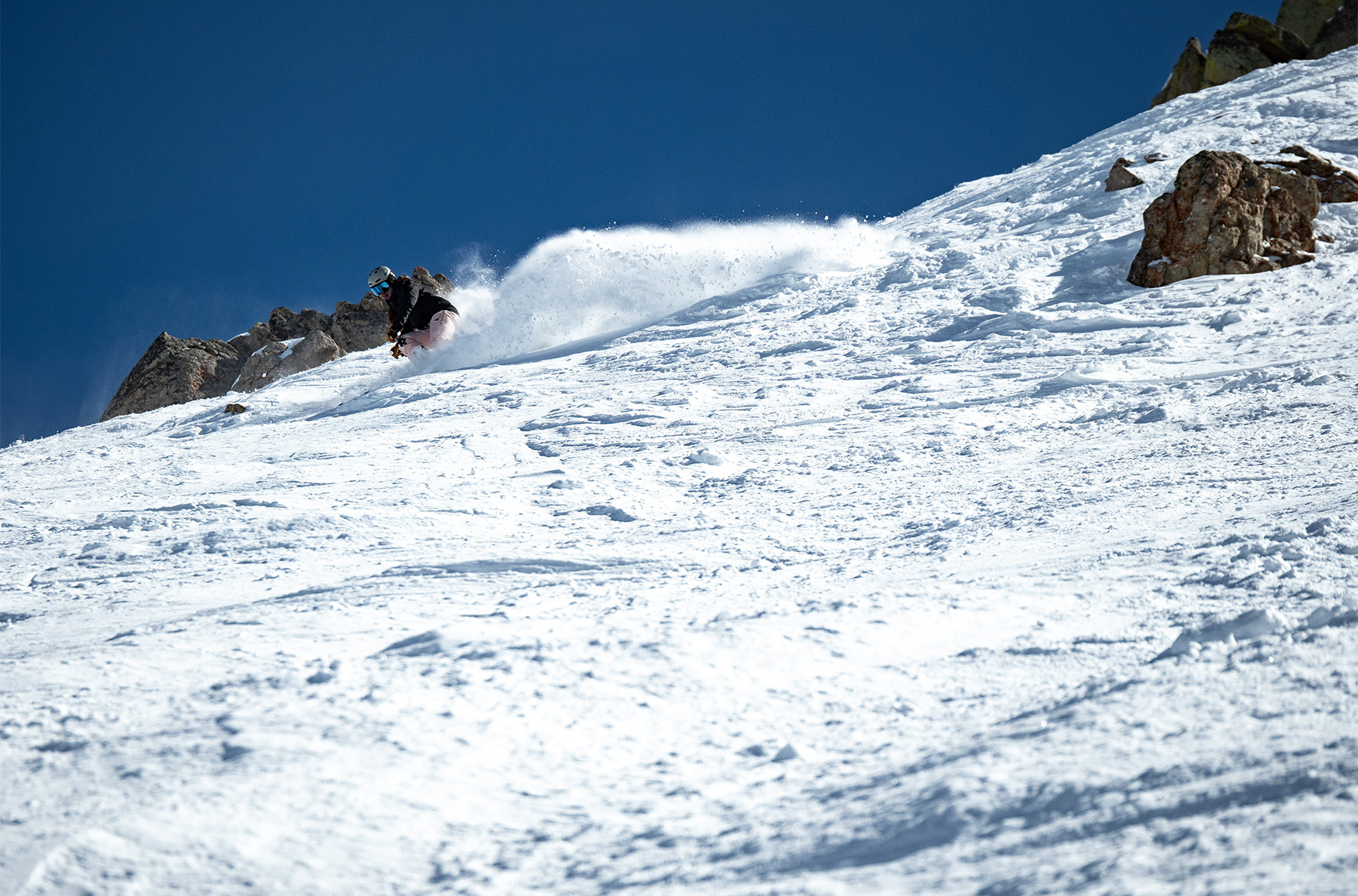
How does the new Armada ARW 106 UL match up against:
-4Frnt Raven
-Renoun Citadel
Any plans on reviewing the new Locator series by Armada?